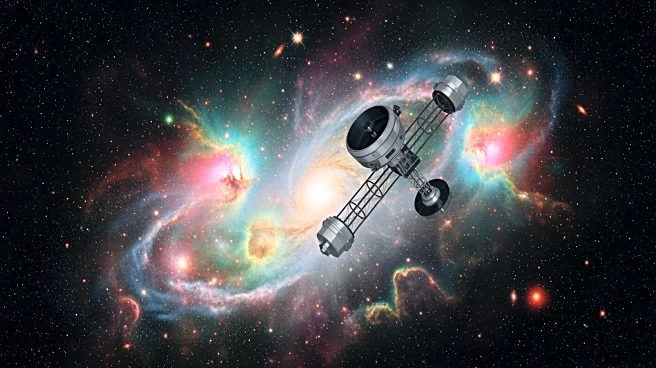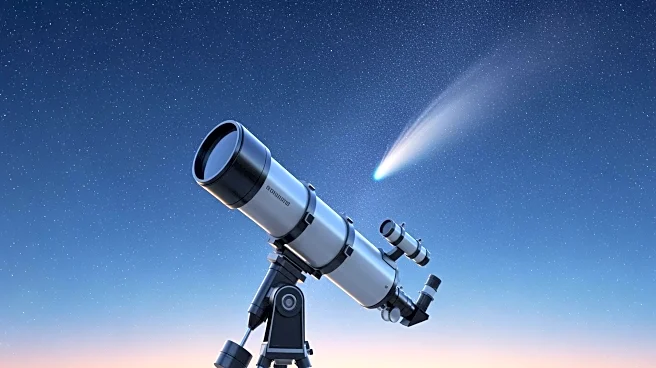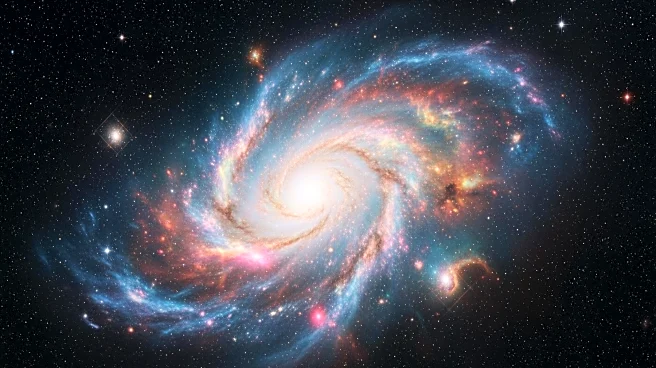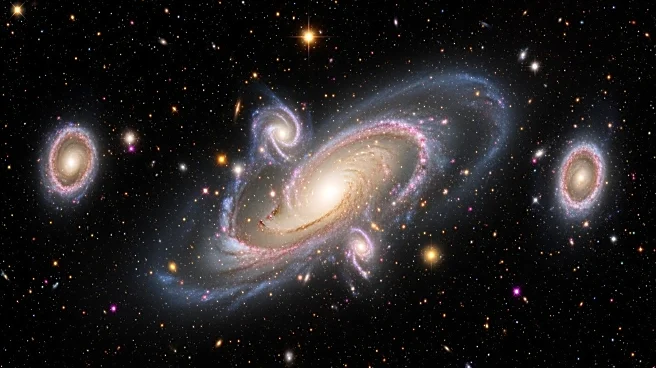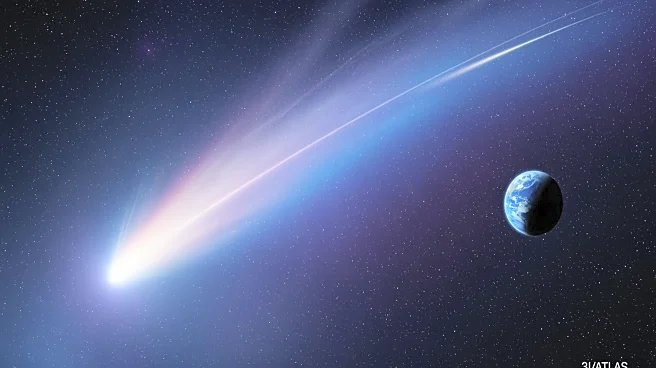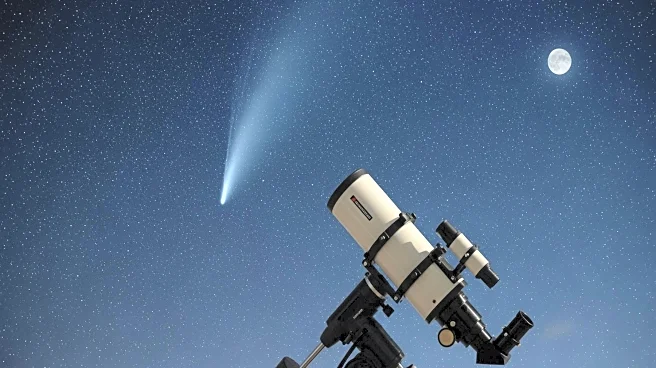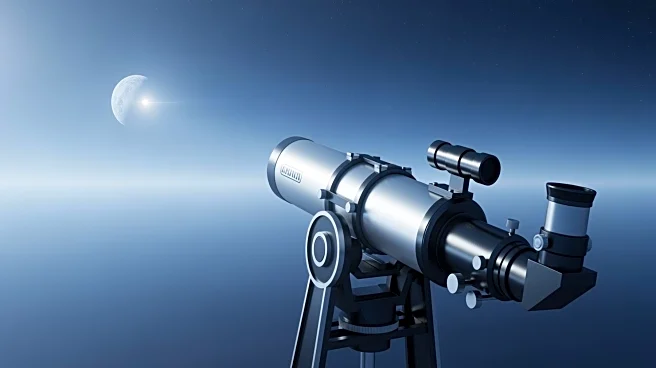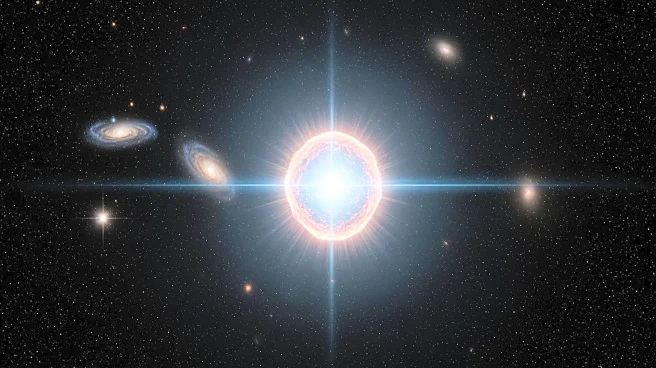What's Happening?
NASA's James Webb Space Telescope has provided unprecedented images of the Sagittarius B2 molecular cloud, the most active star-forming region in the Milky Way. Located near the supermassive black hole
Sagittarius A*, this region is densely packed with stars and complex magnetic fields. Webb's infrared instruments have revealed massive stars and glowing cosmic dust, offering new insights into the processes of star formation. The images show areas so dense with gas and dust that even Webb cannot penetrate them, highlighting the raw materials for future stars.
Why It's Important?
The detailed observations of Sagittarius B2 by the James Webb Space Telescope are crucial for understanding the mechanisms of star formation. By revealing the structure and composition of this region, astronomers can study the conditions that lead to the birth of stars. This research could inform models of stellar evolution and the dynamics of galactic centers. The findings also demonstrate the capabilities of Webb's infrared instruments, which can penetrate dense cosmic clouds to uncover hidden phenomena, advancing the field of astrophysics.
What's Next?
Astronomers will continue to analyze the data from Webb's observations of Sagittarius B2, focusing on the processes driving star formation. Further studies may explore the interactions between stars and their surrounding environments, as well as the role of magnetic fields in shaping these regions. The insights gained from this research could be applied to other star-forming areas in the galaxy, enhancing our understanding of cosmic evolution. Webb's ongoing mission will likely yield additional discoveries, contributing to the broader exploration of the universe.
Beyond the Headlines
The exploration of Sagittarius B2 by the James Webb Space Telescope underscores the importance of advanced technology in expanding our knowledge of the cosmos. The ability to observe distant and obscured regions opens new avenues for research, challenging existing theories and prompting new questions. This development also highlights the collaborative nature of space exploration, as Webb is an international program involving NASA, ESA, and CSA. The findings may inspire future missions and technological innovations aimed at uncovering the mysteries of the universe.
